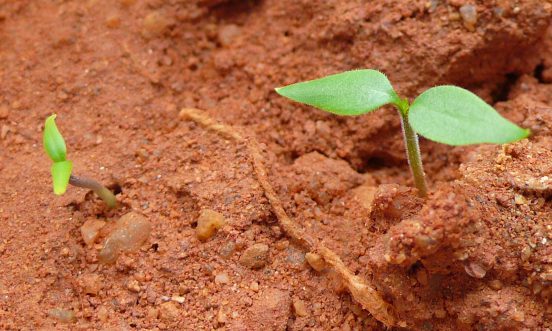Heirloom vegetables, those traditional varieties that are the subject of quite some lore and more than a few feelings of how “those are like I used to know them from way-back-when”, have been growing in popularity.
And yet, even as they are still barely just existent in the food market, attitudes towards them may already be starting to mislead.
It seems that the trend towards heirlooms is mixing itself merrily with the search for the Old, Traditional, and Authentic.
In the process, where modern varieties for industrial agriculture only look after the needs of the (super)market, heirlooms mainly satisfy a certain nostalgia.
The problem is that both share a disregard for development in general, and place-based development in particular.
Modern varieties may not even permit the farmer to change them and are certainly not meant to be further developed by anyone but the companies which create seeds for certain purposes. You probably know the litany of high yield, easy handling (in supermarket supply chains), good looks, herbicide resistance, and all that.
Heirlooms do tend to be more concerned with the taste and the utility for a certain use. Tomatoes for salads or sauces or drying, potatoes for mash or hash or frying,… But the adaptation to places and the continual development?
Burn
Here, the superhot chile peppers are an interesting case.
For the largest part by far, superhots are developed by small breeders. Individual growers of chile peppers with a passion for their diversity and pungency, out to see if they can’t cross certain types, grow out particular strains, and end up with a new record holder.
I still consider this race for “the hottest” a part of the cryptobotany of the chilli more than the sense it makes to grow and use chilli, but at least these people develop these peppers further and further, growing and changing and adapting them.
That’s where the forgotten part about heirloom varieties lies:
They exist(ed) in such great diversity not only because people somehow liked that or even because people wanted varieties with the characteristics they wanted them to have for certain intended uses.
The diversity was also a side-effect of how those varieties were grown and propagated – and thus changed – in a large range of different situations. That is, they were grown as landraces, in all-different land. In different regions, different conditions, across climatic zones.
Even a plant as adaptable as the chile pepper – just give it a long enough and decently warm growing season – was thus changed to fit into different climates and soils, as well as uses and cultural-culinary predilections.
You ever noticed how many older varieties’ names say something about the places they come from? That’s why.
Old, but Not Dead
That’s why heirlooms are not varieties to be grown like displays in glass cases that conserve the past.
A museum specimen is dead.
Even comparing it to a zoo or an ark working to preserve (endangered) species is not entirely appropriate. There is an element of that, but where zoos have to work hard to keep their animals “natural” (as opposed to – more or less – domesticated and adapted only to living in zoos) and healthy, the cultivation of heirloom varieties is part of agricultural or horticultural practice.
Heirlooms are heirlooms not just because they have been grown for a long time; they have been grown by certain people and to maintain certain characteristics – and/or to fit into certain areas.
In fact, as long as an heirloom variety of a chile pepper, for example, gets grown from seeds that its grower keeps, it will change to adapt with the grower and his/her choices, as well as the conditions in that place.
A Future of Heirlooms
We should – and indeed, we will have to – go for approaches focused on that a lot more, in and for the future, I think.
Of course, if one gets seeds of a certain variety, heirloom or not, in order to have a not-too-pungent pepper, for example, it needs to not get crossed with a variety that is highly pungent if it is to retain its important characteristic.
Nonetheless, fewer seed purchases and more seed development, towards new land races and future heirlooms, is highly advisable in a world that needs greater diversity and more adaptation to the land, not least in light of climate change and other challenges.
And who knows what future heirlooms may come of that…



Leave a Reply
You must be logged in to post a comment.